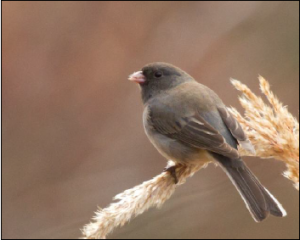“One hundred and fourteen years and still counting ……”
As some of you may know, Frank Chapman, an officer in the early stages of the formation of the Audubon Society, suggested changing the Christmas ‘Side Hunt’ (a competition of choosing sides and who could shoot the most game…feather and fur) to a ‘Christmas Bird Census’ that would count birds versus shoot birds. Twenty seven birders in 25 different areas tallied 90 species on December 25th, 1900. Thus began the annual Christmas Bird Count and what is now the longest running citizen scientist wildlife survey!
According to the Audubon website for last year, there were 2,248 CBC circles and approximately 63,000 participants tallying over 60 million birds. All 50 states, all Canadian provinces, plus 99 count circles in Latin American, the Caribbean and the Pacific Islands participated. The Audubon website states “Each of the citizen scientists who annually braves snow, wind, or rain, to take part in the Christmas Bird Count makes an enormous contribution to conservation. Audubon and other organizations use data collected in this longest-running wildlife census to assess the health of bird populations – and to help guide conservation action.”
Please check the December/January VMN-VMS calendars for details of the three circles active in the Rockingham/Augusta area for this year.
This is a great opportunity to round up some approved project volunteer hours before the end of the calendar year. And it’s full of fun and camaraderie.
Hope to see you at one! – RoxAnna Theiss, November 27, 2013
_____________________________________________________________________________
This year’s Christmas Bird Count (CBC) will be held from December 14, 2013 – January 5, 2014. The Audubon website tells us:
There is a specific methodology to the CBC, and you must make arrangements to participate in advance with the circle compiler, but anyone can participate.
Each count takes place in an established 15-mile wide diameter circle, and is organized by a count compiler.
If you are a beginning birder, you will be able to join a group that includes at least one experienced birdwatcher.
If your home is within the boundaries of a CBC circle, then you can stay at home and report the birds that visit your feeder on count day as long as you have made prior arrangement with the count compiler.
To participate in this project, please contact one or more of the compilers for our three local circles:
- A mostly Rockingham County circle is centered at Ottobine Rd. and Clover Hill Rd. (257 and 613). Its count will be on Saturday, December 14. Contact Bill Benish, 540-908-7336, wcbenish[at]comcast.net If at all possible, he needs to hear from you by December 7 for you to participate.
- An entirely Augusta County circle is centered at Verona. This count will be on Sunday, December 15. Contact Allen Larner, birdergonewild[at]yahoo.com
- A third counting circle in our area straddles the Augusta and Nelson County lines incorporating Stuarts Draft and parts of Waynesboro. It will be held on Saturday, January 4, 2014. Contact Crista Cabe, ccabe[at]mbc.edu no later than December 14.
More from the pages of the Audubon Christmas Bird Count website:
Ten Things We Learned from Audubon’s Christmas Bird Count
- Birds are not Climate Skeptics, having spoken with their wings.
- The Bald Eagle is back; the Endangered Species Act Works
- Many of America’s most familiar and beloved birds are in serious decline.
- Eurasian Collared-Doves invaded America
- Peregrine Falcons are no longer in trouble
- Sage-grouse are in deep trouble WatchList
- More and more hummingbirds are staying in the USA and Canada for winter
- “Eastern” House Finches having been moving west for 60 years
- How fast and how far West Nile virus spread
- Birds are early indicators of environmental problems that can affect people
See more here http://birds.audubon.org/how-christmas-bird-count-helps-birds



